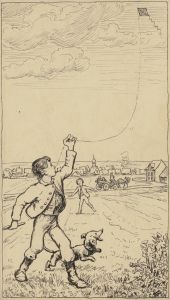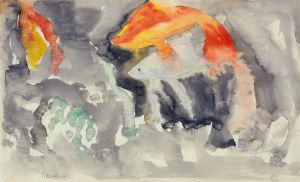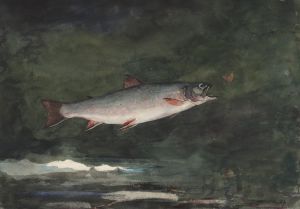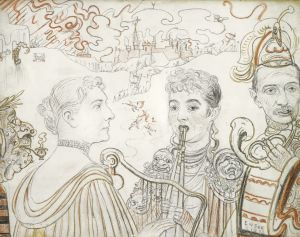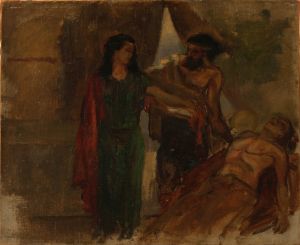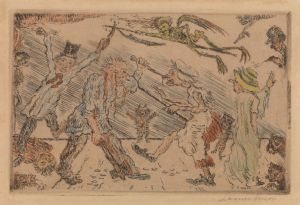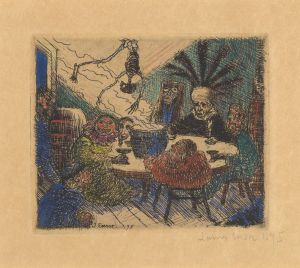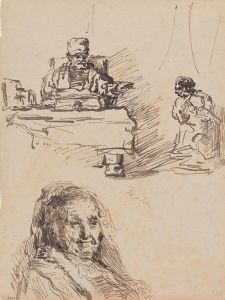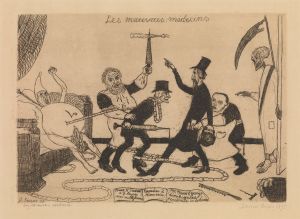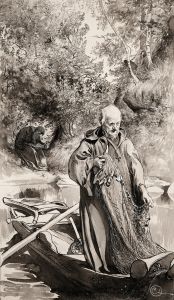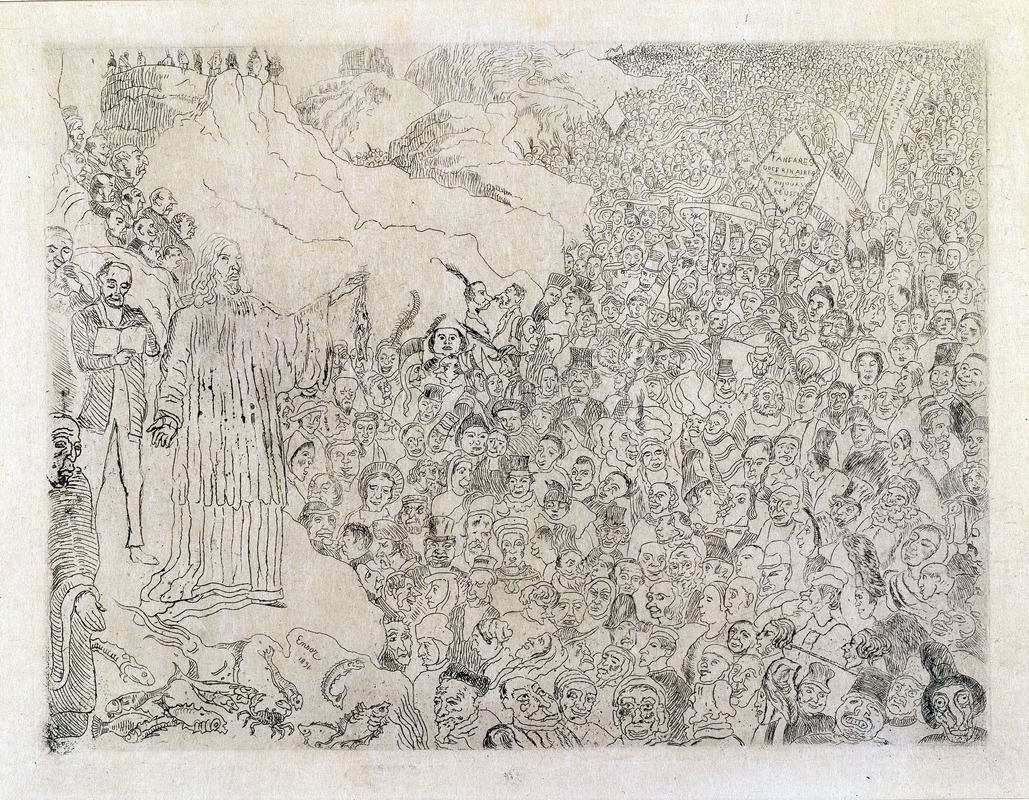
The Multiplication of the Fishes
A hand-painted replica of James Ensor’s masterpiece The Multiplication of the Fishes, meticulously crafted by professional artists to capture the true essence of the original. Each piece is created with museum-quality canvas and rare mineral pigments, carefully painted by experienced artists with delicate brushstrokes and rich, layered colors to perfectly recreate the texture of the original artwork. Unlike machine-printed reproductions, this hand-painted version brings the painting to life, infused with the artist’s emotions and skill in every stroke. Whether for personal collection or home decoration, it instantly elevates the artistic atmosphere of any space.
James Ensor, a prominent Belgian painter and printmaker, is known for his unique and often satirical style that blends elements of symbolism and expressionism. One of his notable works is "The Multiplication of the Fishes," a painting that reflects his fascination with religious themes and his distinctive approach to traditional biblical subjects.
"The Multiplication of the Fishes" was created in 1891, during a period when Ensor was deeply engaged with religious iconography. This painting is part of a broader series of works where Ensor explored biblical miracles and parables, often infusing them with his characteristic sense of irony and critique of contemporary society. Ensor's interest in religious themes can be traced back to his upbringing in a devoutly Catholic family and his exposure to religious art and iconography from a young age.
In "The Multiplication of the Fishes," Ensor depicts the biblical miracle of the feeding of the multitude, where Jesus is said to have multiplied a small amount of fish and bread to feed thousands. Ensor's interpretation of this miracle is not a straightforward religious illustration but rather a complex composition that reflects his unique artistic vision. The painting is characterized by its vibrant colors, dynamic composition, and a sense of chaos and movement that is typical of Ensor's work.
Ensor's style in this painting, as in many of his other works, is marked by a bold use of color and a loose, expressive brushwork that conveys a sense of immediacy and emotion. The figures in the painting are rendered with exaggerated features and expressions, a technique Ensor often employed to critique societal norms and human folly. This approach aligns with the broader Symbolist movement, which sought to convey deeper meanings and emotions through symbolic imagery and unconventional techniques.
The painting also reflects Ensor's interest in the grotesque and the macabre, elements that frequently appear in his work. The crowd in "The Multiplication of the Fishes" is depicted with a sense of frenzy and disorder, perhaps suggesting a critique of the masses or a commentary on the nature of miracles and belief. Ensor's use of masks and distorted figures can be seen as a metaphor for the hidden truths and underlying absurdities of human existence.
"The Multiplication of the Fishes" is housed in the Royal Museum of Fine Arts in Antwerp, Belgium, where it is part of a significant collection of Ensor's works. The painting is an important example of Ensor's contribution to modern art and his ability to blend traditional themes with innovative techniques and perspectives.
James Ensor's work, including "The Multiplication of the Fishes," continues to be studied and appreciated for its originality and its impact on the development of modern art. His ability to infuse familiar religious narratives with personal and societal commentary makes his work both timeless and relevant, offering insights into the complexities of faith, society, and the human condition.





